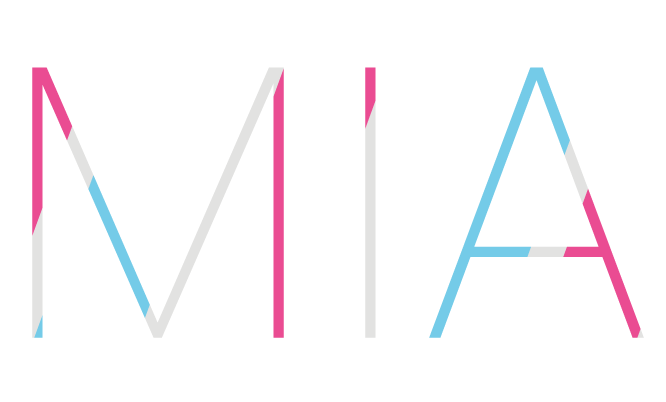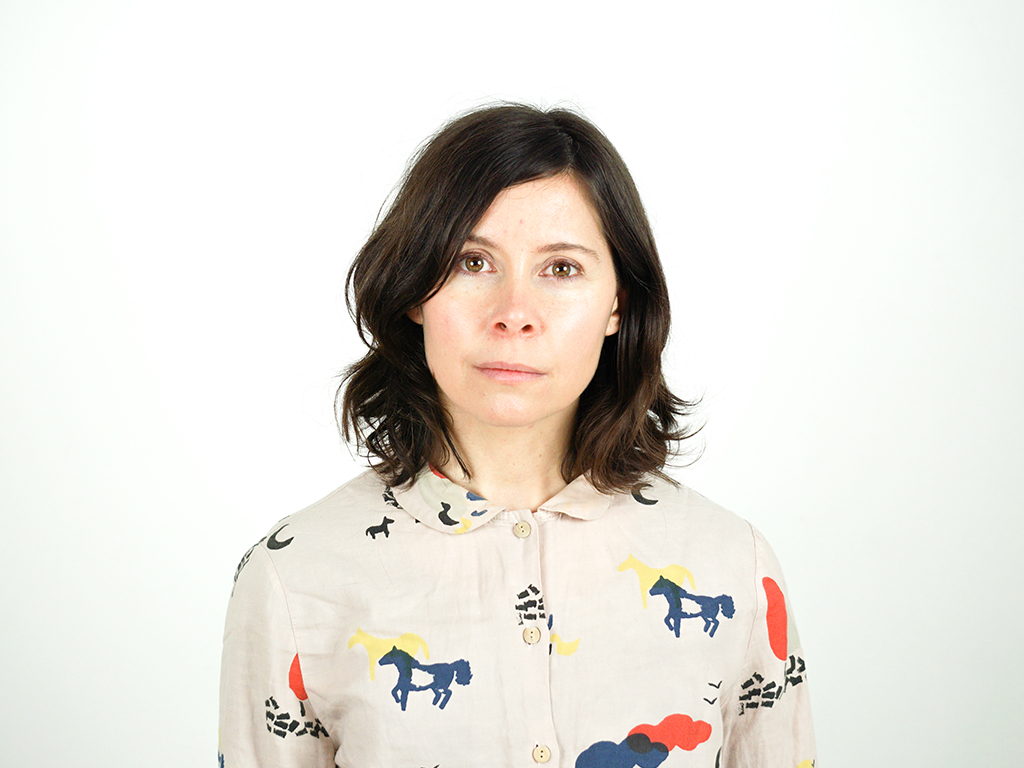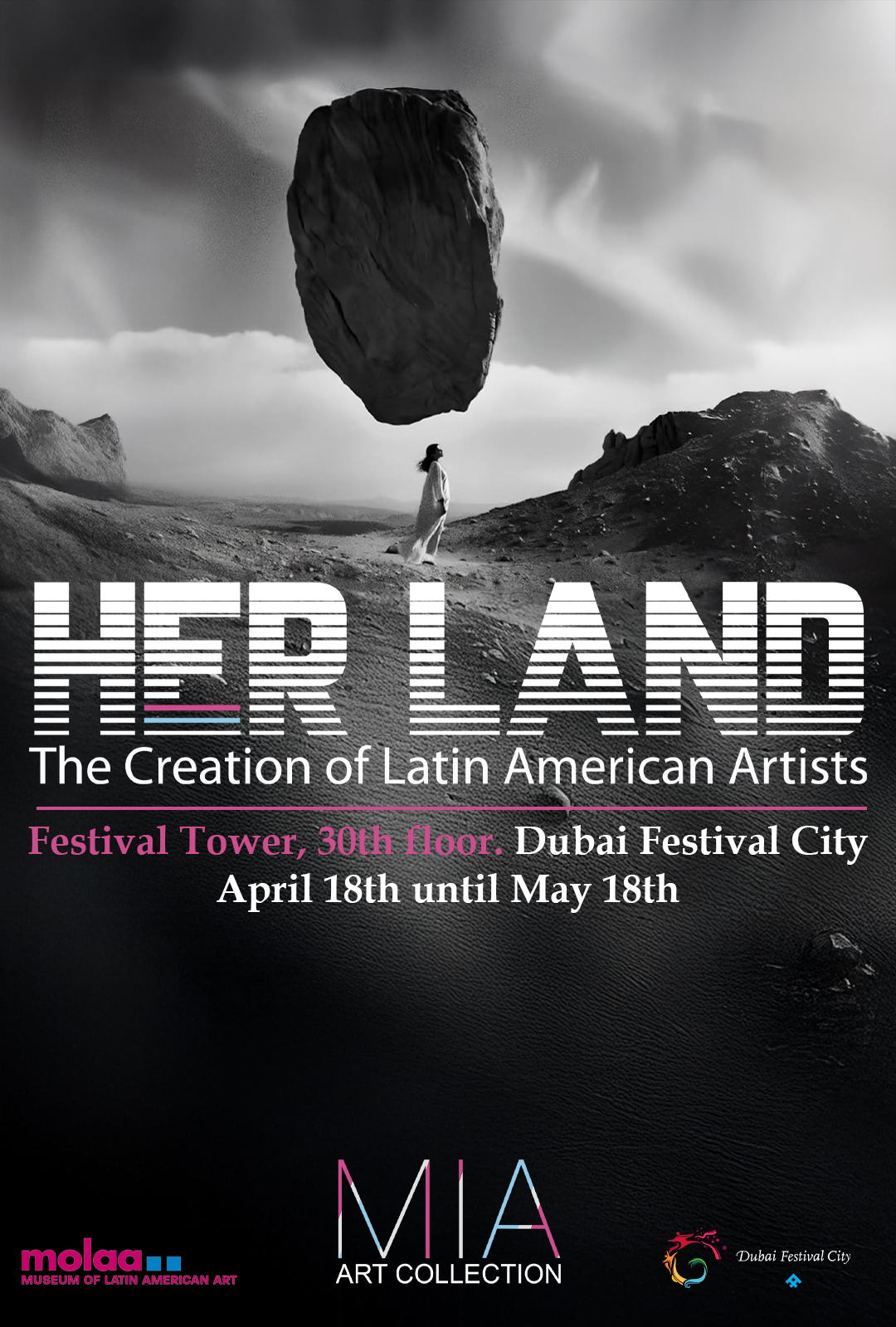MIA Art collection acquires the piece “Permission de Travestissement” from the exhibition “Ella, el ojo, el dedo, la mano” curated by Alexandra Laudo
At MIA Press we spoke with the curator Alexandra Laudo and she told us about her professional life in the art world, she also told us the details of the piece acquired by MIA Art Collection.
1. How do you discover your passion for curating art and with a feminist perspective?
I started to work in the field of museology and contemporary art very soon, shortly after finishing my degree in Humanities, when I was in my early twenties. At the beginning my responsibilities focused on issues that had more to do with the communication of exhibitions and artistic projects, and occasionally also with their production and the organization of public activities. Progressively and in parallel, I was developing tasks that had more to do with programming and curating, almost unconsciously, until at one point I realized that I was curating projects and that this was the job that most I was interested and I liked doing. However, the construction of discourse in relation to the artistic work through the text and the word is something that continues to have a lot of weight in my work as a curator, I do not know if it is due to the inheritance of that first professional stage or due to a pre-existing interest of mine for the narration, the literary, the written text and the orality.
Unlike other curators, theorists and theorists who clearly focus their practice on feminism, my work around these issues, at least as a theme, is more intermittent. She is very present, among others, in the project that I have curated at ADN Galeria, Ella, el ojos, el corazón, la mano, in the Videofeminisms project that I developed years ago for the Fundació la Caixa, and in some of the curatorial investigations that I am currently carrying out, but I do not think it is a theme that defines my professional career or my curatorial practice.
I would like to think, instead, that it is a position that I try to define my way of living and, by extension, my way of working, the approaches and values from which I try to articulate my personal and work relationships.
As long as there is still structural inequality towards women somewhere in the world (and this inequality unfortunately exists in many places) being a feminist is not an option, just as it is not an option not to be racist, or not to be homophobic, in the sense that defending human rights is not an option.
That said, trying to live according to these principles, not falling into certain contradictions or not participating in certain dynamics is not always easy. The difficult thing is not to declare oneself a feminist or anti-racist, but rather that our way of living and acting is always consistent with such statements. I certainly don’t get it, but I take the attempt as a permanent job.
2. As an art curator, how do you see the development of art shows and collections in relation to feminism?
It seems to me very important and absolutely necessary to re-feminize the history of art and the artistic scene, to recover voices and female figures that have been excluded from the hegemonic stories. Not only because of a question of parity and representation, but also because of a wealth of meanings and meanings. Excluding certain voices and looks from the way we think of the world and we think of ourselves as human beings is a way of impoverishing ourselves, of simplifying ourselves.
3.The exhibition “Ella, El ojo, El dedo, La mano”, what does it mean to you?
Until now, the curatorial projects he had carried out had been for art centers, museums and independent platforms. This is the first exhibition that I curate in the gallery context, and to be able to do it in a gallery with the trajectory, the recognition, the human team and the resources that ADN Galeria has -and also within the framework of the Barcelona Gallery Weekend-, is an opportunity unmatched. The exhibition responds to the specific commission by the gallery to carry out a curatorial project with Margaret Harrison, María María Acha-Kutscher and Núria Güell, three artists that ADN represents, but it is interesting how existing this pre-established framework, I have been able to work with imagination and with great freedom; I have felt very supported by both the gallery and the artists in my proposals, some of which perhaps were not the easiest or obvious.
This exhibition has given me the chance to work for the first time with three artists whose practice I followed, knew and valued, but with whom I had not yet had the opportunity to collaborate. I really liked having the opportunity to get closer to their works, to read and investigate about them and to be able to establish dialogues and relationships between their works. There has been a very active dialogue, especially with Núria Güell, perhaps because she lives here and because we have known each other for a long time despite not having worked together until now. It has been a very enriching work process.
4. What do you think of the piece and its artistic manifesto that the MIA Art Collection acquired from the show She, the eye, the finger, the hand? What is its importance and why?
I think it is an acquisition that fits very much in the philosophy and mission of MIA Art, and that will contribute significantly to the discourse that Alejandra Castro and her foundation team are building through the collection. Permission de Travestissement (2020) is part of a project that María María Acha-Kutscher started in 2017 and is titled Herstorymuseum. It is a kind of imaginary museum with which the artist wants to refine the history of art, creating sets of images that she understands as small exhibitions, and which focus on artists and creators who, in the hegemonic discourse of art history, have remained invisible or relegated to more secondary positions. In this particular chapter or exhibition, made up of thirty-six images, Acha-Kutscher brings together portraits, quotations and works by artists from different disciplines and periods who have appropriated the symbols of power traditionally associated with masculinity, in a gesture of emancipation and vindication of the right to determine their own image, or to mitigate the inequalities they suffered in relation to their fellow men. The title, Permission de Travestissement, refers to an ordinance issued in Paris in the 19th century by which, in certain cases and circumstances, women were allowed to dress as men.
5. What do you think of the work that MIA does regarding feminism in the art world?
I think it’s very important. In the collections of most museums, the representation of men and women is extremely unequal; That there are foundations like MIA that specifically collect art made by women and that also articulate educational projects around these works is necessary and very valuable.
6. How do you see the development of initiatives that support women artists in the world?
It seems to me that it is a necessary, valuable, fundamental development. But unfortunately it also denotes that the artistic system and the whole of society are still very much dominated by patriarchal logic and powers. Initiatives that su
pport female artists (and women in general) are necessary because there is a dis-structural inequality that disadvantages them. Everything that requires support usually exists in resistance to some dynamics that oppose it.
7. What is your opinion on the digitization of art samples? And what do you think of MIA Anywhere, the first museum of digital female art in the world?
I understand art as a universal human heritage, and for this reason it seems to me very valuable that private collections develop dissemination and knowledge programs that facilitate access to their works. Digital exhibitions are a good way to do it, especially if they are organized taking into account the specificity of the digital medium. To carry out my work, I use these platforms a lot to investigate and have access to information and documentation of works that I cannot visit. But I believe that there is still something irreplaceable and irreplaceable about the experience of being in front of an artistic work, of seeing it and living it directly, without the mediation of a screen. Being part of the place and time of the work, coexisting with it in the same space and at the same time, offers a possibility of transcendence that at least I, who am not a digital native, cannot experience through the screen.


